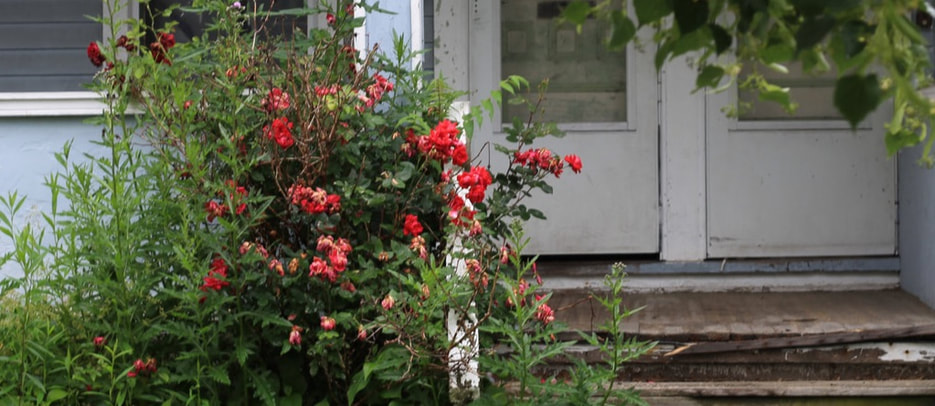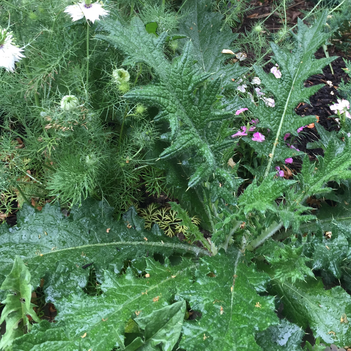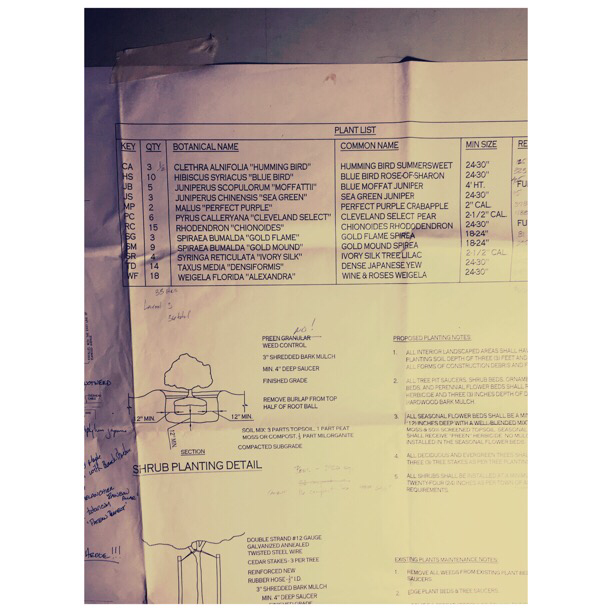Part One.
What is a weed? This question is thrown about every so often, almost jokingly, to make a point that gardens can be whatever we want them to be. More practically, this question comes to me in the field - "Matt, is this a weed? Do I pull this?"
Interestingly, I would suggest, in the profession, one learns the identification of weeds before ornamental plants. It is a matter of repetition. For the most part, we probably come accross 30 plant species that we manage as weeds every day. This is opposed to the hundereds of named species and cultivars of "commodity" or ornamental plants we will use in a year. In this sense, what we are talking about are two overlaying and competing maps of how to know and conceptualize the landscape or garden. On the one hand, we have the garden or landscape as an ecosystem, which, because of our geographic region and cultural practices, tends to harbor the spontaneous growth of certain plant life. This emergence and spontaneity from the soil has no name - the plants are only identifiable by their tactile characteristics - for example, everyone's first learned weed is either the pretty yellow flower in the lawn that many call "Dandilions" or for the weed pullers, the broadleaf thorny weed named "Thistle." These plants or weeds are learned as antonyms to the named "commodity plants." In elementary garden life, weeds are pulled not because of what they are but because of what they aren't - named. Those who work with me will most likely know what "weeds" need to be pulled within their first few months working. But learning the plants of the trade - the commodity plants - this is never ending. There is always "the unknown," "the mysterious," and "the exotic," in the commodity world - weeds can only be familiar (to those who work in tactility) because they emerge from the land itself. Part Two.
When proposing a landscape design, its designer often explains the intent of the design by explaining its "function" and secondly by showing the plant layout and listing the species.
Images accompany the presentation and the ritual allows the client to approve of the objects that will fill in the landscape. I have moved away from this format of presentation as it exponentiates the labor demanded in maintenance. I instead use only a list of botanical names to obscure the client’s knowledge of the objects. I avoid pictures at all costs and only bring them out when they are demanded. In their stead, I discuss the form, texture, and color that each plant performs in the palette. Secondary to the spaces created and poetic reference, the plant palette and building materials are most important in a landscape. With this understanding, I introduce to the client spaces that are affected by color, form, and texture - or design - as opposed to developing a space affected by species. The contrast of the material forms creates interest and visual sensation and works to affect space along with poetic connotations. In the past, I did as I learned, and presented pictures of species as other designers do. But over time I have found this to create more weeds in the landscape. So I have chosen to focus on design principles and design vocabulary. With this approach, as the landscape begins to establish itself, colors, textures, and forms will fill in a designated space, instead of the inverse. The lines and intensities develop the richness of the palette in a manner that can never be fully planned, only guided. It is here, in the maintenance, that the designer continuously designs and the plant specifier meticulously pulls weeds.
Jenny
8/11/2016 06:04:49 pm
I was always told that a weed is what ever you don't want in your garden. If you don't want roses in your garden and you have them they're weeds.
Anonymous
8/12/2016 07:32:36 am
Well Jenny, I think it is just important to focus on what emerges. Call it what you wish - Indigenous, Maple, Rose. Some things emerge and others don't - yet - they are still there occupying space. Comments are closed.
|
Matthew DoreLandscape designer and Proprietor of Buffalo Horticulture Archives
April 2020
Categories |
Telephone(716)628.3555
|
|



 RSS Feed
RSS Feed